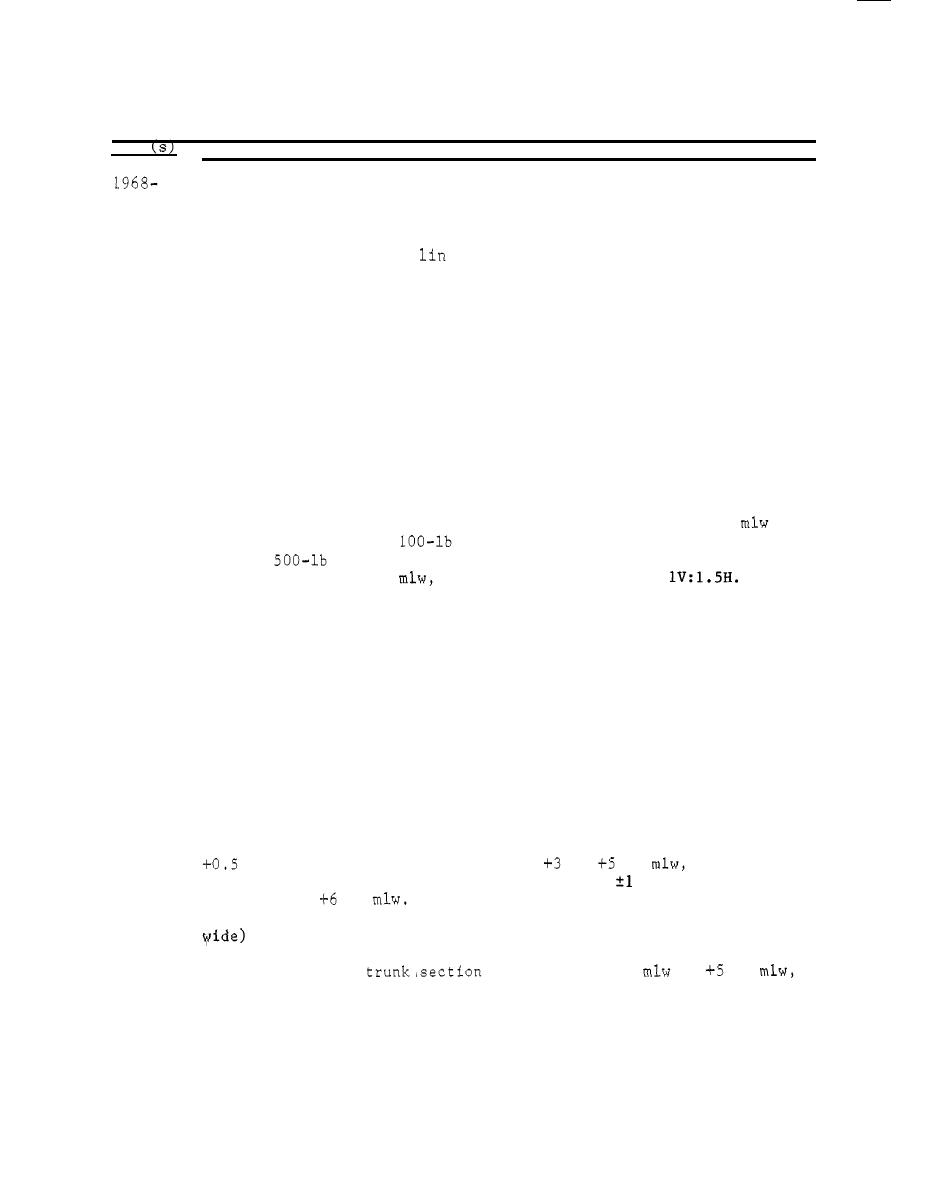
Table 32 (Continued)
Date
Construction and Rehabilitation History
predominantly westward littoral drift. The deposition basin located
1969
on the channel side of the weir was to have a 400,000-cu yd capacity
(Cont)
and provide for at least a 2-year volume of littoral drift. Esti-
mated stone quantities, sheet pile, and costs (including dredging)
ft, and
||content||
,180,000.
were 49,400 tons, 7,190
1969
Portions of the timber wale system on the weir section were lost
shortly after project completion. Subsequent inspections revealed
that the wales were slowly, but progressively, being lost. This
problem was also encountered on the Masonboro Inlet weir jetty.
1970
An annual surveillance survey completed in March revealed a scour
trough on the channel side immediately adjacent to, and extending
almost the entire length of the weir. The scour appeared to be the
result of the extreme turbulences created by waves breaking over the
weir section. Immediate action was required to prevent possible
failure of the concrete sheet-pile weir; therefore, the scour trough
was filled with sand pumped by hydraulic dredge. During the summer
the channel side of the 1,000-ft weir was rehabilitated with armor
stone. The section (Figure 58) was to be placed at -6.5 ft
with
a 2-ft layer of 5- to
blanket stone and a 3-ft layer of
100- to
cover stone. The crown width was 1 ft, the crown
0
elevation was -1.5 ft
and the side slopes were
The
estimated amount of stone required was 4,850 tons. Cost of the
repair work was ,000.
A SAM report on the weir jetty (prepared for CERC) indicated that
1972
the deposition basin had filled to capacity during the first
2 years. The pattern of filling indicated that in addition to the
westerly littoral drift material sand movement on the ebb tide was
interrupted and collected in the basin. Subsequent encroachment of
additional material into the navigation channel indicated the need
for prompt dredging of the deposition basin on a regular basis.
1974
The rubble-mound sections of both jetties were rehabilitated to
to the rehabilitation showed substantial losses of material on both
jetties. Crest elevations on the east jetty were (a) inner 75 ft at
ft mlw, (b) the next 200 ft from
to
ft
and (c) the
ft of the design
remainder (including the head section) within
The entire west jetty appeared to have
ft
elevation of
undergone a substantial loss of bedding layer (it was 5 to 1 ft
0
and cover stone on the channel side when compared to the de-
sign cross sections (no previous survey data found). The crest
varied from 0 ft
to
elevations on the
ft
and the head section crest elevations were at or above the design
elevations.
(Continued)
(Sheet 2 of 3)
102



 Previous Page
Previous Page
